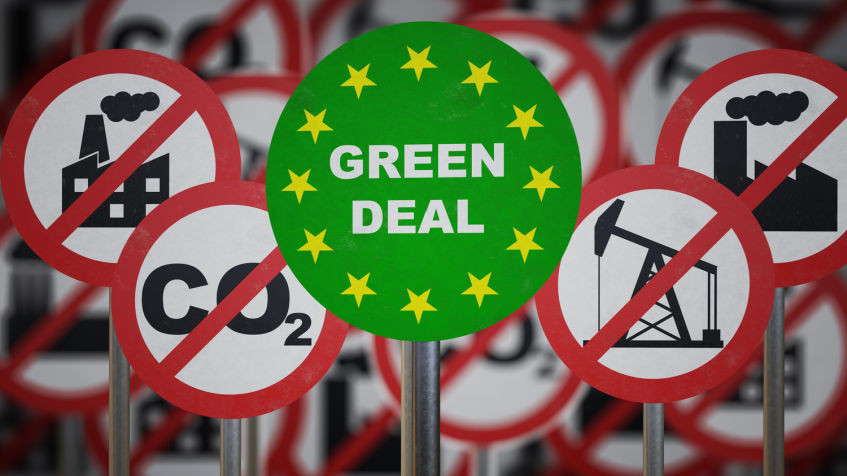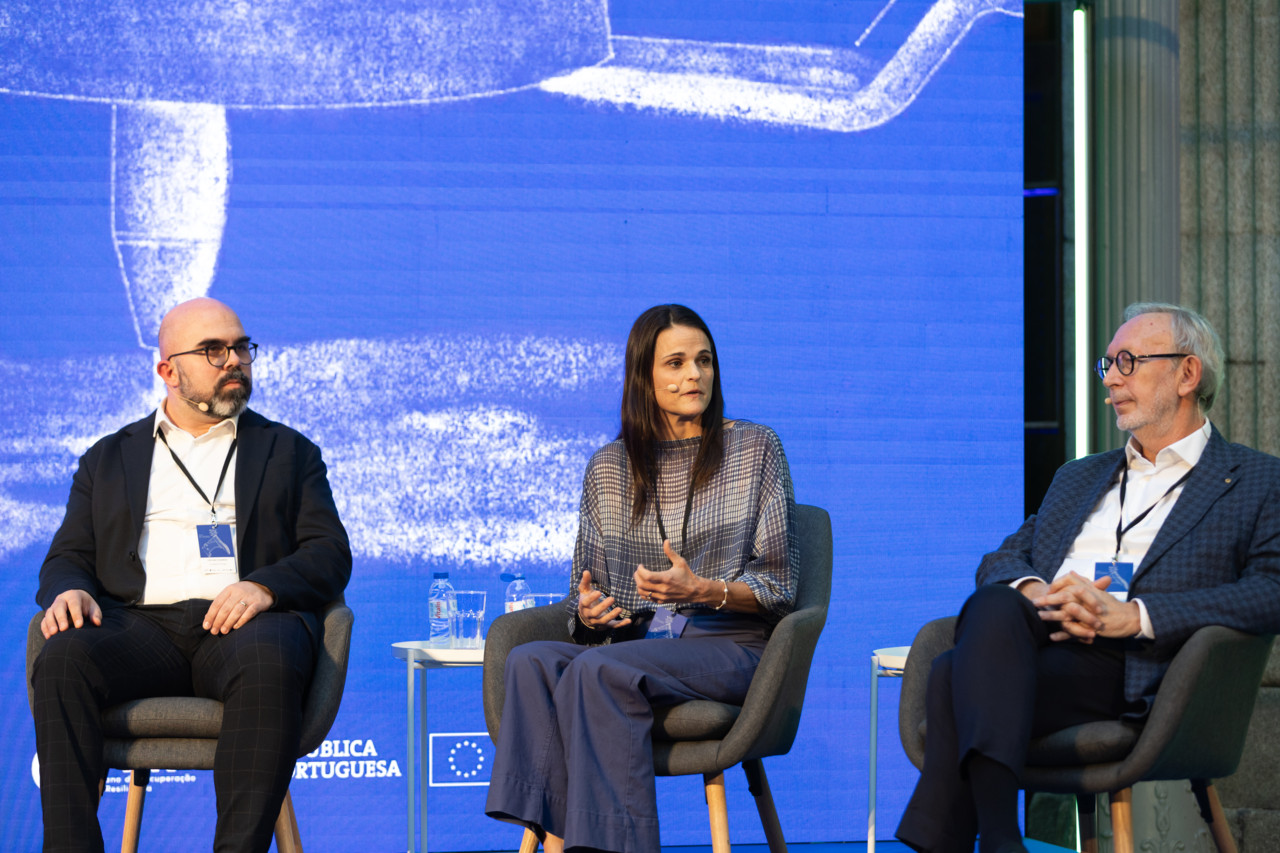
Sole moulding: innovation is chasing lightness, less chemicals, more recycling
Gas, co-moulding and recyclable thermoplastics: at Simac Tanning Tech 2025, the sole sector shows where innovation is really heading.
Keep reading...
October 2025

‘The Green Deal risks being a tool for the deindustrialisation of European manufacturing.’ Tommaso Foti, Italian Minister for European Affairs, did not mince his words at the Federchimica assembly.
And he is not alone: it is the cry of alarm of an entire Italian production system caught between environmental ideals and real costs. Because while Brussels charts the course towards climate neutrality, Italian SMEs are faced with a brutal choice: invest prohibitive sums or surrender to non-EU competition operating without constraints.
From the stage of the “La chimica dei valori” (The Chemistry of Values) event in Milan, Minister Foti added fuel to the fire: ‘It is clear that when we talk about industry in Europe, we must also start from a consideration that may seem trivial, but does Europe still believe in industry and does it still believe in European industry? Because if we do not first ask ourselves whether this is an objective or not, it is difficult to interpret certain initiatives correctly. Personally, I don’t think the Green Deal was a mistake. It was a deliberate and perfectly planned accident with the ideological aim of deindustrialising Europe. I say this because it is impossible that, using only common sense, anyone could have realised what was being set up. These are goals that are impossible to achieve, but which are pursued with a shrewdness that can only be described as persecutory.”
FASHION UNDER ATTACK
The sector – 60,000 companies, 600,000 employees, £92 billion in turnover – is on the front line. “The Italian fashion system is under attack from global competition, technological transformations, energy cost pressures and new European regulations,” says Luca Sburlati, president of Confindustria Moda. The numbers speak for themselves: exports down 4% in the first half of 2025, Chinese imports up 18%. And there is an even more disturbing fact: according to an Ambrosetti report, the sector is eight years behind its 2030 targets and would need £24.7 billion in investment. The problem? 92% of Italian companies cannot afford it. “Too fragile,” explains Carlo Cici of Ambrosetti.
Carlo Capasa, president of the National Chamber of Fashion, said it to the European Parliament: “The costs of the transition must be charged to those who fill landfills with fast fashion, not to creative fashion.” The point is precisely this: European regulations – CSRD, Digital Product Passport, Ecodesign Regulation – do not distinguish between those who produce lasting quality and those who flood the market with disposable goods. Roberto Bottoli, coordinator of the Veneto Fashion Table, warns of the risk of “green fanaticism or excessive bureaucracy” that only burdens European producers.
Foti reflects on other figures: “In Europe, we are almost extremely concerned with stabilising emissions on a daily basis, when Europe accounts for 6% of emissions. While we congratulate ourselves on reducing our emissions a little, others are increasing them recklessly and managing to compete with us in a way that is pushing us out of the market”.
THE NUMBERS THAT MATTER
Talking about transition is easy, paying for it is not. The CSRD costs €274,000 initially plus €148,000 per year. For an SME in Vicenza, this could mean closure. Then there is energy: electricity at €150/MWh, the most expensive in Europe; gas at a ratio of 4:1 compared to the US. How can we compete like this? Italian industrial production fell by 8.2% between mid-2022 and the end of 2024. These are not fluctuations: this is a structural collapse.
THE OPPOSING VIEW
Yet there are those who see the Green Deal as an opportunity. Anna Turrell, Chief Sustainability Officer at Decathlon, put it in black and white: ‘The Green Deal is Europe’s biggest competitive advantage. And we companies need certainty.‘ Her thesis overturns the narrative: it is not the Green Deal that is stifling, but regulatory uncertainty. ’A clear legal framework will allow investment in sustainable practices that guarantee jobs and prosperity.” Businesses are ready to invest, but stable rules are needed for planning.
Seven CEOs of major European industrial groups – from Siemens to Schneider Electric – have written that they are ‘turning the challenge into a competitive advantage through lower energy costs.’ And Ilham Kadri, CEO of Syensqo: ‘Climate change is a risk but also a huge opportunity. We need both sustainability and profitability.’ Not one against the other, but together.
THE CROSSROADS
The Commission has taken a first step backwards with the Omnibus package: CSRD only for companies with over 1,000 employees, savings of £6 billion per year, 80% of companies exempt. But more is needed: an approach that distinguishes quality from mass production, protects SMEs and prevents unfair competition. A Green Deal that does not become a “tool for deindustrialisation” but also not a pretext for postponing an inevitable transition.
The real crossroads is not between the environment and competitiveness. It is between those who will be able to turn sustainability into an advantage and those who will be left behind. The question is: will Europe give its businesses – especially the smallest ones – the tools to meet this challenge? The time for answers is running out.
Minister Foti, however, is more categorical: ‘What is the goal? Is it to reduce Europe, which already has its own intrinsic problem of declining birth rates, to a garden for the elderly, or do we want to maintain a productive Europe that continues to be a beacon of global manufacturing? It is not possible to think that we can follow the path of a Green Deal without dismantling this Green Deal, without acknowledging that it is not possible to continue on a path that resembles a suicide mission’.

Gas, co-moulding and recyclable thermoplastics: at Simac Tanning Tech 2025, the sole sector shows where innovation is really heading.
Keep reading...
The final panel of the "Welcome to the Factory of the Future!" conference brought together leading figures from the European footwear and textile industry to discuss reindustrialisation. Between real opportunities and regulatory obstacles, the debate highlighted an uncomfortable truth: the rules of the game are not the same for everyone.
Keep reading...
The FAIST panel brought together international experts to discuss innovation, automation and the central role of the human factor in the factory of the future.
Keep reading...You must login to read this free content
This content requires a subscription to view. Are you already a subscriber? Sign in